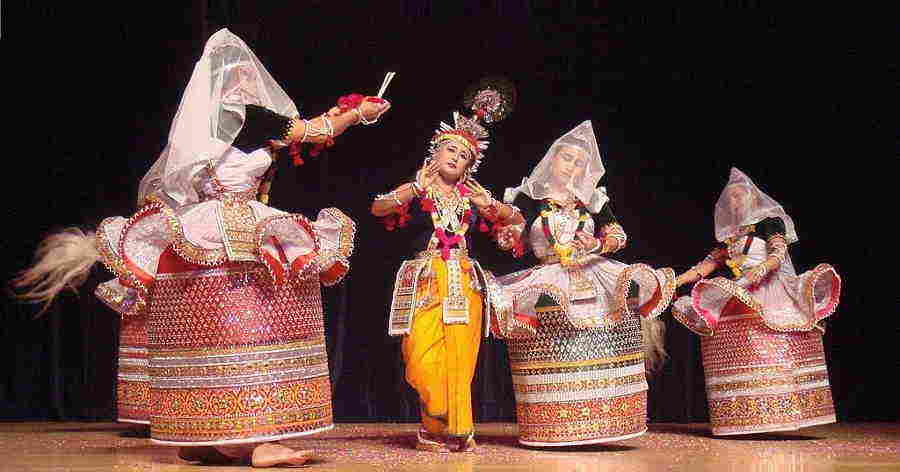
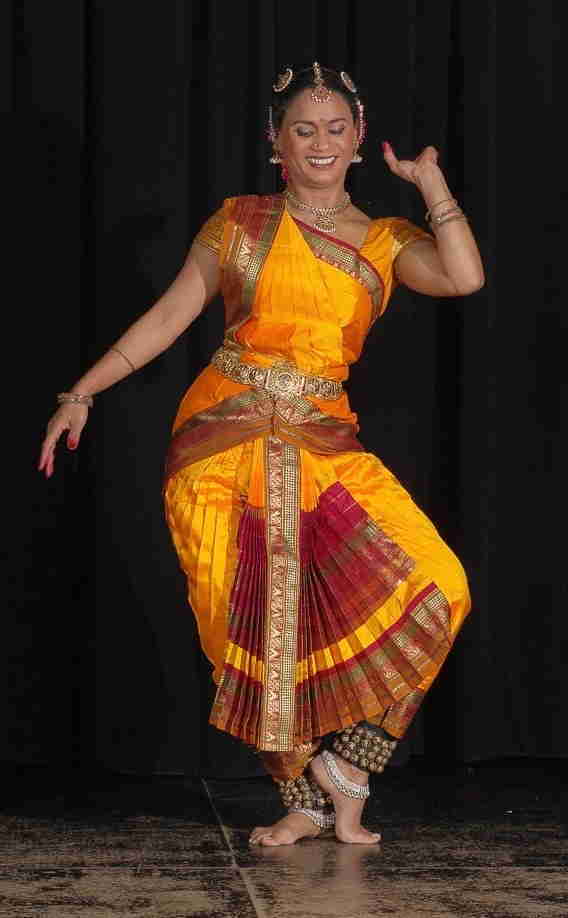
Bharatanatyam is a classical Indian dance form which has its roots in the southern part of India. It is one of the oldest known dance forms and has been an important part of Indian culture for centuries. The name Bharatanatyam comes from the words 'Bharata' and 'natya', which mean 'dance' and 'dramatic performance' respectively. Bharatanatyam is a form of storytelling, with the dancer conveying stories, ideas, and emotions through intricate hand and facial expressions, graceful body movements, and precise footwork. The dance is usually performed in a Bharata Natyam costume, which consists of a nine-yard sari draped over a blouse, and a waist belt of bells known as 'ghungroo'. The dance is usually accompanied by percussion instruments such as the mridangam, ghatam, and tabla. It is traditionally performed in a temple or theatre setting, with an audience seated in a semi-circle. The dance is structured in three main sections, known as Alarippu, Jatiswaram, and Varnam. Alarippu is an opening piece, with dancers performing simple steps to get into the rhythm of the music. Jatiswaram is a fast-paced section featuring intricate hand and foot movements. Varnam is the longest and most complex section, where the dancer tells a story or conveys a message through her movements.
In terms of technique, Bharatanatyam is based on the Natyashastra, an ancient Hindu text on performing arts. The dance is divided into four distinct parts - nritta (pure dance), nritya (expressive dance), natya (dramatic dance), and abhinaya (storytelling). The dancer uses complex hand gestures known as 'mudras' to convey emotions and ideas, and follows intricate footwork patterns known as 'adavus'. Bharatanatyam is a highly technical and physically demanding form of dance. It requires years of dedicated practice and training to master the intricate steps and movements. The dancer also needs to be familiar with the traditional repertoire of Bharatanatyam compositions and must have a deep understanding of the stories and emotions being conveyed.
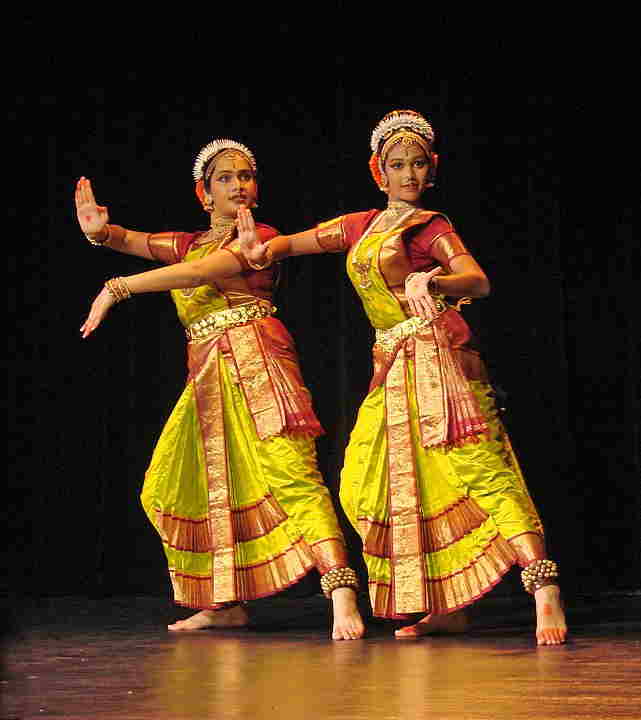
Kuchipudi is an ancient classical Indian dance form that originated in the South Indian state of Andhra Pradesh. The word Kuchipudi is derived from the village of Kuchelapuram in Andhra Pradesh, which is the birthplace of this art form. Kuchipudi is a classical dance form that is known for its intricate and graceful movements. It is a combination of dance, drama and music. Kuchipudi is characterized by its graceful and energetic movements, which are derived from Bharatanatyam, the main classical dance form of South India. The movements of Kuchipudi are generally more complex and longer than those of Bharatanatyam. Kuchipudi performances typically involve a solo dancer and a group of musicians. The performance includes a traditionally-scripted story, which is told through the dancer's facial expressions, body language, and hand gestures. The dancer's costume is typically a sari, which is decorated with heavy jewelry, with an underskirt and a tight-fitting blouse. The dancer usually wears bells around the ankles and wrists that produce a melodious sound when they move.
The music in Kuchipudi performances is typically Carnatic music, which is a classical South Indian style of music. It is composed of ragas and talas, which are structured musical patterns that help guide the dancer's performance. The instruments used in Kuchipudi performances are usually the mridangam, a double-headed drum, and the tamburi, a hand-held drum. Kuchipudi is known for its graceful and energetic movements that are precise, intricate, and well-defined. These movements are performed in a particular order and with precise musical timing. The dancer's movements are precise and precise gestures and poses that must be performed with great precision and synchronization with the music. The dancer must also display a great amount of control and coordination when performing the intricate movements. Kuchipudi is a beautiful and captivating form of dance that is both entertaining and spiritually uplifting.
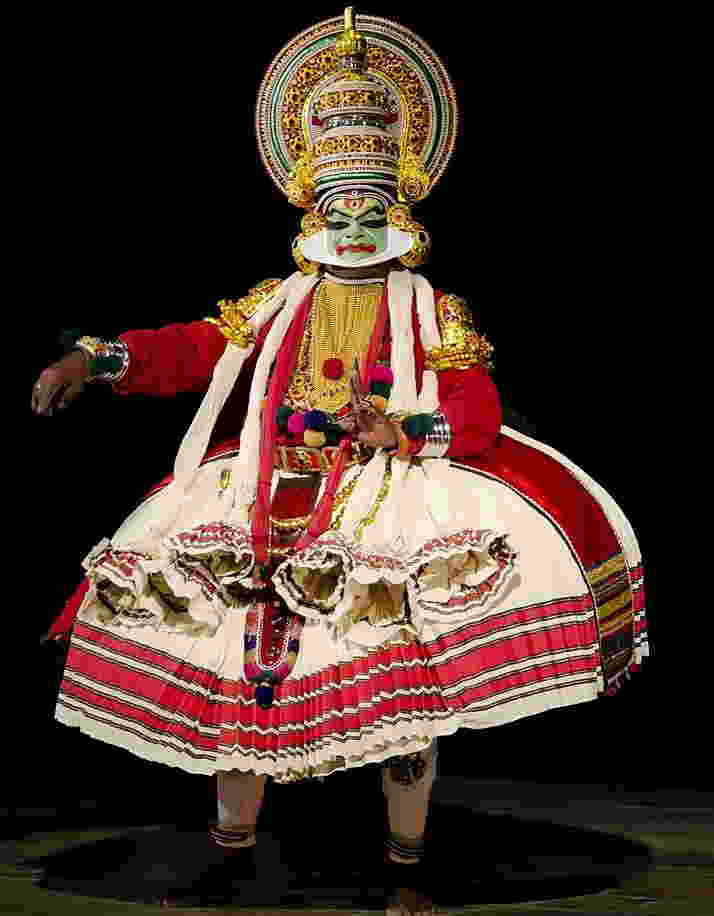
Kathakali is a classical dance form from Kerala, India, which combines dance, drama, and music. It is considered one of India's oldest, traditional dance forms and one of the most popular. Kathakali is a highly stylized form of Indian classical dance that combines facial expressions, body movements, and music with stories. The term Kathakali can be broken down into two words - “Katha” which means story, and “Kali” which means performance. The performance of Kathakali is highly stylized and involves intense facial expressions and body movements, along with elaborate and ornate costumes. The dance also incorporates elements of Hindu mythology and religious stories, making it a powerful way to convey spiritual messages.
Kathakali is usually performed in a large group, with a lead dancer and accompanying musicians. The dancers wear brightly colored and intricate costumes, often depicting characters from Hindu mythology, and each character has a unique set of facial expressions and body movements. The dancers use their eyes, hands and feet to express their emotions and express the story being told. The accompanying musicians use drums, cymbals, flutes, and other instruments to create a lively atmosphere. Kathakali is known for its intricate and highly stylized footwork, which is an important part of the dance form. The footwork is a combination of intricate patterns and steps that create a beautiful visual effect. Kathakali also requires the dancer to master a variety of body postures and movements, including facial expressions and hand gestures.
Kathakali is a very physical form of dance, requiring dancers to build strength and stamina. It is also a very demanding form of dance, requiring dancers to be highly trained and disciplined. It is usually performed in the presence of a live audience, which adds to the energy of the performance. Kathakali is an art form that is both entertaining and educational. Its combination of story-telling, movement, music, and costumes make it a powerful way to communicate spiritual and religious messages.

Mohiniattam is a classical dance form of India which is known for its graceful movements and expressions. It is believed to have originated in the state of Kerala and is the only classical dance form of Kerala. The word Mohiniattam is derived from two words – ‘Mohini’ which means enchantress, and ‘attam’ which means dance. Thus, the literal meaning of Mohiniattam is ‘dance of the enchantress’. This dance form is usually performed by solo female dancers. It is characterised by its graceful, soft and sensuous movements of the body, legs and arms. The costume of a Mohiniattam dancer is very simple and elegant. It usually consists of a white and gold sari, a golden belt, and a golden headgear. The dancer also wears traditional jewellery pieces such as bangles, necklaces, earrings, and rings.
The music of Mohiniattam is based on Carnatic music. The dance is usually accompanied by the chenda, a drum-like instrument, and the elathalam, a pair of cymbals. The songs used in Mohiniattam are usually in Malayalam, and they tell stories from Hindu mythology. The main component of Mohiniattam is the ‘nritya’ or dance. This involves expressive movements of the hands, eyes, and body. The dancer makes use of the ‘abhinaya’ or facial expressions to convey the emotions of the song. The ‘nritya’ is usually accompanied by the ‘nritta’ or pure dance component, which involves intricate footwork and rhythmic patterns. The movements of Mohiniattam are very slow and graceful. The dancer moves her body in a circular motion and her hands in a graceful manner. The ‘talas’ or rhythmic patterns are also slow and graceful.
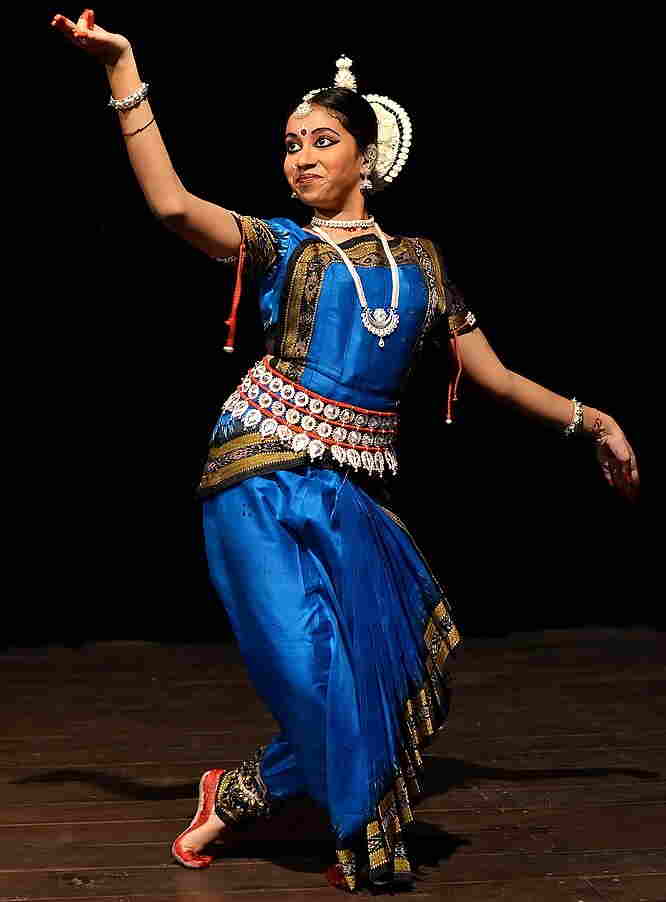
Odissi is a classical Indian dance form originating from the state of Odisha. Odissi is characterised by its graceful movements, intricate footwork and postures, and its dynamic use of body gestures. The movements are often accompanied by the rhythmic beat of the drum and the melodic notes of the flute. Unlike other Indian classical dances, Odissi is mainly performed solo, although some performances may include two or more people. The performance has three distinct parts – the Mangalacharan, Nritta and Nritya. The Mangalacharan is the invocation and opening sequence of a performance. It is a slow, graceful and devotional dance in which the dancer moves slowly and gracefully, making use of various mudras or hand gestures. The Nritta is the most important part of the performance. It consists of a series of complex and intricate movements, which are sometimes accompanied by music. These movements are often very fast and intricate, and require a great deal of technical skill and physical stamina. The Nritya is the third and final part of the performance. It combines the graceful movements of the Mangalacharan and the intricate movements of the Nritta. The Nritya is usually more expressive than the other parts, and can be used to tell stories or express emotions.
Odissi is often performed as a solo, but can also include duets and group performances. Many Odissi performances are based on stories from Hindu mythology and the Ramayana, Mahabharata and other Epics. Odissi is a highly expressive and dynamic form of dance. It is known for its gracefulness, complexity and beauty. It is also known for its spiritual aspects, as it is believed that the dancer is able to communicate with the divine through the movements. Odissi is a beautiful and complex form of dance that has been attracting people from all over the world for centuries.
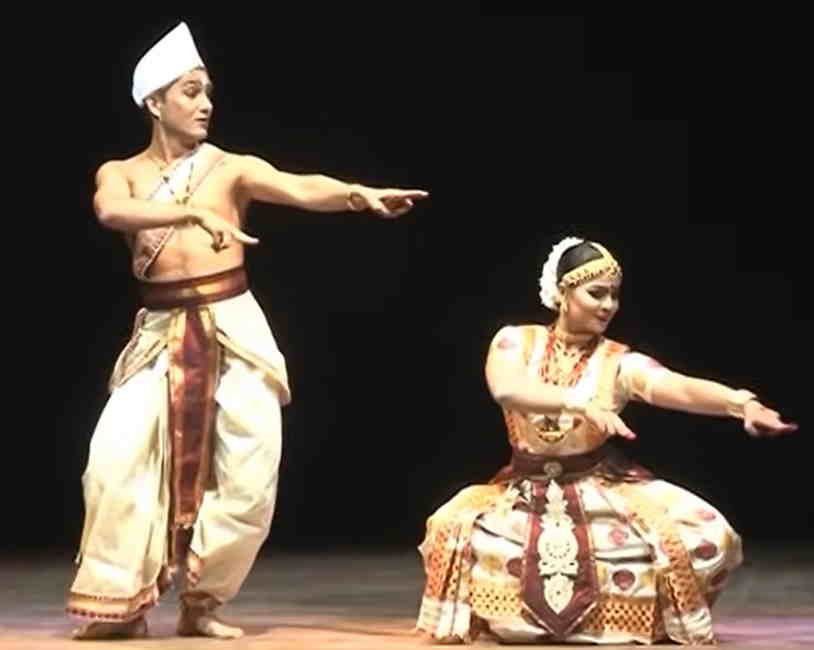
Sattriya is an ancient Indian dance form that originated in the state of Assam in the North Eastern part of India. It is a classical dance form that is performed in temples and in the royal courts of the Ahom kingdom in ancient times. It is one of the eight major classical dance forms of India and is widely regarded as the oldest dance form of India. Sattriya is based on Vaishnavism, a branch of Hinduism, and is a combination of both religious and secular elements. In its traditional form it is performed by a group of men and women in colorful costumes and accompanied by a variety of instruments. The performers usually depict stories from the Hindu scriptures, such as the Ramayana and Mahabharata. The dance form has some unique features that distinguish it from other classical dance forms of India.
The most distinctive feature of Sattriya is its use of bhavas (emotions) and abhinaya (expression). Bhavas are used to express various emotions such as love, sorrow, joy, anger, and surprise. Abhinaya is used to convey a story or emotion through bodily gestures. The costumes worn by the dancers are also quite unique. They are typically made of bright colors and embroidered with various patterns. The dancers also wear a headdress called a kopi and a waist-belt called a kanchi. The kopi is usually made of silver and is adorned with jewels and a peacock feather. The kanchi is a wide belt that is embroidered with colorful designs and is used to hold the costume in place. The music that accompanies Sattriya is also unique and consists of two distinct styles. One style is called Jhumur and the other is called Borgeet. Jhumur is a rhythmic, percussion-based style with melodic elements and is usually used to depict a lively story or emotion. Borgeet is a more lyrical style that is often used to express a deeper emotion or sentiment.
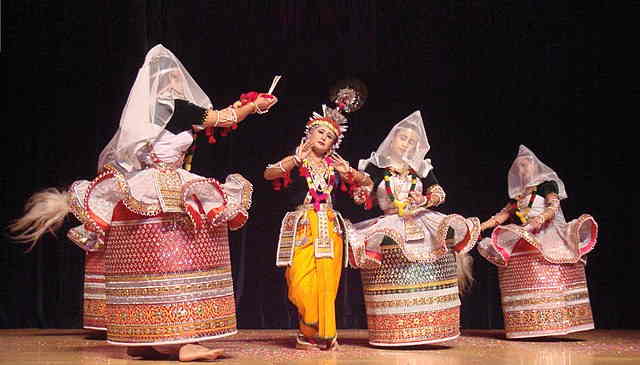
Manipuri is a classical dance form originating from the state of Manipur in India. It is one of the eight major classical dance forms of India and is traditionally performed to the accompaniment of classical Manipuri music. Manipuri dance is characterized by its grace and serenity, with the movements being slow and subtle. The dancers are known to be very expressive, conveying emotions and feelings through their gentle movements. The costumes used in Manipuri dance are simple, consisting of a dhoti or skirt with a long-sleeved shirt and a veil over the head. The dancers also wear ankle bells which add to the rhythm of the music. Manipuri dance is usually performed in a circular form called the pung. The pung is usually accompanied by a musical ensemble consisting of drums, cymbals, a flute and other percussion instruments. The dancers move in a circle and perform various complex patterns and formations as the music plays. The dancers also perform intricate footwork and hand movements, which further add to the beauty of the dance.
Manipuri dance is believed to be a combination of the martial arts of Manipur and the religious rituals of the Hindu religion. The movements and steps of the dance are said to be inspired by the war dance of the Meitei people of Manipur. It is also said to be inspired by the Hindu gods and goddesses and is often used to express religious stories and myths.
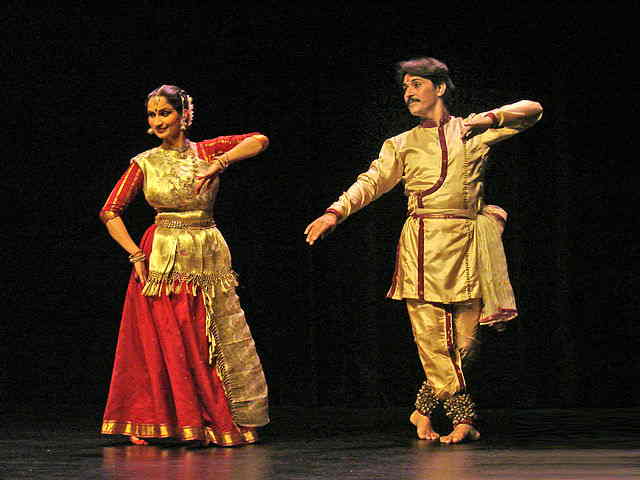
Kathak is a classical dance form of North India, believed to have originated from Uttar Pradesh. It is also known as ‘Kathakar’, meaning ‘storyteller’, as it is believed to have been used to narrate religious stories and epics. Kathak is one of the eight forms of Indian classical dance and is characterized by its fast, complex footwork. The dancers’ feet move rapidly and rhythmically, creating a sound that is accompanied by the accompaniment of Indian instruments such as the tabla, harmonium, and sarangi. The Kathak dancer often wears a long, colorful skirt and a blouse and holds a small cymbal in each hand to create a percussive accompaniment. Kathak is traditionally performed as a solo dance, but can also be performed in a group. The dancers often tell stories through facial expressions, hand gestures, and body movements.
The traditional Kathak repertoire includes stories from Hindu mythology, tales of the court, and Sufi poetry. The Kathak repertoire is divided into three main styles: nritta, which is the rhythmic part of the dance; nritya, which is the expressive part; and natya, which is the dramatic part. Each style is further divided into a variety of sub-styles. The nritta style of Kathak focuses on the technical aspect of the dance, with intricate footwork and hand gestures, while the nritya style focuses on the expressive and emotive aspect of the dance. The natya style focuses on the theatrical aspect of the dance and includes the use of mime, facial expressions, and characterizations. Kathak dancers often use their feet to create intricate patterns in the air, as well as on the floor. Their feet also help create a percussive accompaniment, by tapping and stamping in various patterns. This is known as ‘tatkaar’.

Chhau dance is a traditional dance form from the eastern Indian states of Jharkhand, West Bengal, Odisha, and Bihar. It is a martial dance form that originated from the martial culture of the tribal people of these states. It is a masked dance form, where the dancers wear brightly coloured masks, representing different characters from Hindu mythology. The form of the Chhau dance is an amalgamation of the local influences from these states and is performed in the form of a story. It is usually performed to the accompaniment of drums and other traditional instruments. The dancers use their body movements and gestures to tell the story to the audience.
The costumes of the dancers reflect the costumes of the tribal people of the states in which Chhau is performed. The dancers wear a pair of trousers and a short blouse known as ‘Chhaupadi’, and a brightly coloured mask. The masks are usually made of paper-mache and can be made to represent any character, such as a king, a queen, a warrior, a god or a demon. The movements of the Chhau dance are very expressive and graceful. The dancers move in a circular fashion and use their hands and arms to convey emotions and feelings. The movements of the dancers also include jumps and leaps, which demonstrate the martial nature of the dance form. The music of the Chhau dance is very energetic and invigorating. The music is usually provided by a group of drummers and other traditional instruments, such as the flute, cymbals and the tambourine.